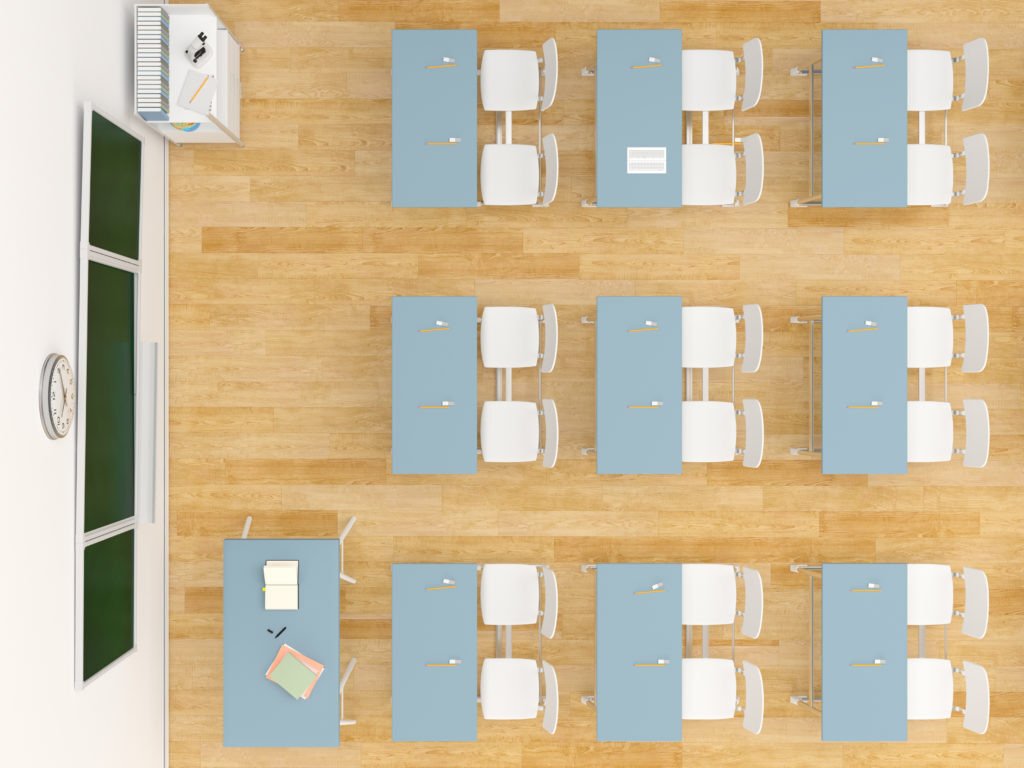How COVID-19 is Reshaping the Way We Approach Architecture and Design

In the beginning of 2020, no one could have predicted how strongly the COVID-19 pandemic would impact the world around us, and it is likely we will feel these effects for years to come. But as we witness the reopening of our communities and businesses, what does this altered world look like for the construction community? The way we live, learn, work, and interact with one another have changed drastically, and thus, the spaces where we do these things will also have to adjust.
Earlier this year, we referenced a study done by the American Institute of Architects. AIA looked to explore “how design strategies, backed by science, can be a public health solution,” focusing on creating strategies to make designs safer overall. According to Insurance Journal.com, construction is one segment of the economy that could actually come out stronger on the other side.
Since AIA’s study, changes in technology, industry-specific needs, and rising infection rates have risen to the forefront. We’ve broken down a few of these key changes, and what they could mean for design as we look toward the coming months and years.
Fresh Air Technology Solutions
The need for consistent turnover of fresh air to keep indoor environments safe and clean has become essential. To meet this demand, larger spaces, especially offices and schools, must completely rethink their approach to air handling units (AHUs). Contractors are assessing whether older and more outdated AHUs can handle the increased need, beyond the basics of more frequent cleaning and maintenance. One alternative moving forward might be implementing dedicated outdoor air systems (DOASs). DOASs are high performance machines that could easily meet the rising needs for fresh air circulation. However, these machines require much more energy to function.
Looking Ahead:
In the coming months, we can expect architects to seek middle ground in terms of air solutions in their designs. It will be incredibly important for designs to meet the essential requirements of safety protocols while also maintaining sustainable levels of energy consumption. Pay special attention to cost-efficiency products, longevity of systems, and code compliancy as local and state governments become increasingly more involved in air requirements.
Live-Work-Learn Update
Many workforces and schools have begun returning to their spaces for the first time since March 2020. Both extremely vital infrastructures in our communities, these buildings look a lot different than how we left them. Necessary protocols have been applied to keep these essential parts of our community functioning, while still prioritizing health and safety. Widely spaced desks and workspaces, mandatory face coverings, limited use of public restrooms and other congregating areas, temperature checks before entering, and more are just a few of the widespread necessities we have seen implemented. Beyond these measures, some schools have instituted a hybrid learning model, forcing schools to function as both an in-person learning hub, as well as a virtual, at-home classroom.
Looking Ahead:
Tasked with the new challenge of balancing beautiful and creative designs while also providing solutions to public health concerns, architects should continue to monitor conditions closely to meet the needs of this ever-evolving situation. Certain elements that previously seemed unimportant are suddenly prioritized. Consider shifting your thinking to include more features like touchless entry points, spacious and open floor plans, sanitizing stations, and technological accessibility in your future designs. With changes to regulations and requirements occurring on what seem to be a daily basis, there is one sentiment that has stood out: the pandemic is not just a public health issue, but also a public space issue. Architects have been placed in a unique position where the design community can offer support and solutions for keeping the public safe. Shift thinking and approach, make a plan to constantly adapt the plan, and check back on BuildGP.com/blog for frequently updated trends, insights, and more as we navigate these uncertain times together. For additional thought leadership, stay tuned for part two of Georgia-Pacific Building Product’s pandemic coverage as we examine how the residential space is dealing with the impacts.
